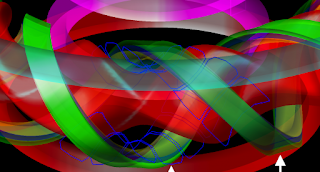Scientists at the U.S. Department of Energy’s Princeton Plasma Physics Laboratory (PPPL) and the National Institute for Fusion Science (NIFS) in Japan have developed a rapid method for meeting a key challenge for fusion science. The challenge has been to simulate the diagnostic measurement of plasmas produced by twisting, or 3D, magnetic fields in fusion facilities. While such fields characterize facilities called stellarators, otherwise symmetric, or 2D, facilities such as tokamaks also can benefit from 3D fields.
Researchers led by PPPL physicist Sam Lazerson have now created a computer code that simulates the required diagnostics, and have validated the code on the Large Helical Device stellarator in Japan. Called “Diagno v2.0,” the new program utilizes information from previous codes that simulate 3D plasmas without the diagnostic measurements. The addition of this new capability could, with further refinement, enable physicists to predict the outcome of 3D plasma experiments with a high degree of accuracy.
The researchers employed a mathematical technique called “virtual casing” to develop the new code for 3D fusion plasmas that are in equilibrium. Such plasmas are held steady by the balance between the inward pressure of the magnetic fields that confine them and the outward pressure exerted by the plasma. Virtual casing enabled the researchers to efficiently calculate magnetic diagnostic signals given a simulated plasma. This was achieved by recognizing that the magnetic field at the edge of the simulated plasma was all that was necessary to calculate the magnetic diagnostic signals.
PPPL:
A fast new method for measuring hard-to-diagnose 3D plasmas in fusion facilities

Comments